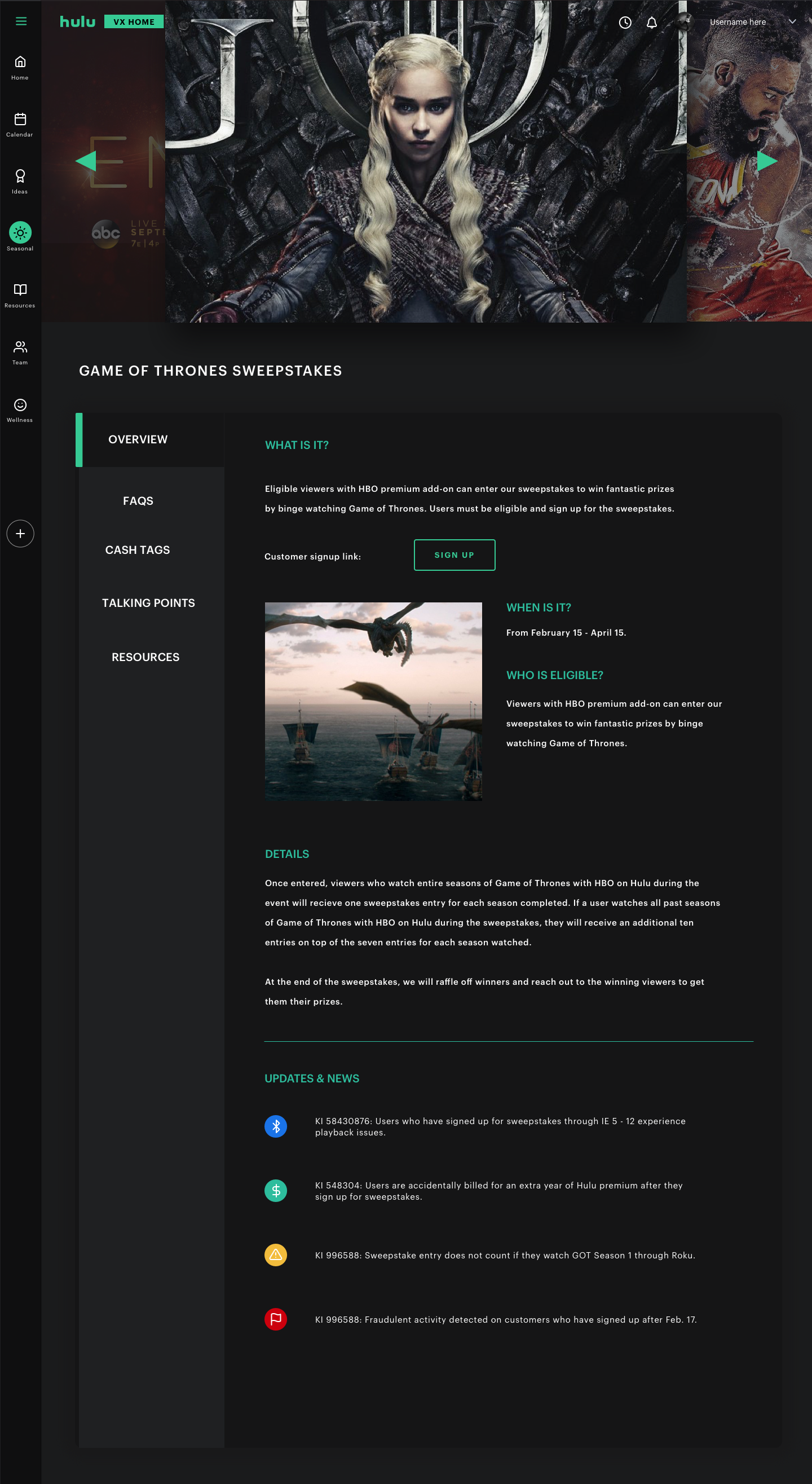VX Home—a support tool that tracks issues, blending personal wellness features to reduce stress and boost productivity.
The Opportunity
VX Express began as a platform where Hulu’s Viewer Experience Advocates (VXAs) log their shifts and check Known Issues (KIs) reported by viewers. Hulu found that 80% of VXAs only used it to clock in and out. An initial heuristic analysis identified 29 usability problems, and VX Express failed accessibility standards.
The Solution
Enter VX Home (formerly VX Express), a portal designed to support users as whole individuals. It boosts productivity while considering how people think, learn, and feel. Before, VXA agents juggled 5 to 8 programs at once, causing frustration. VX Home is now a “one stop shop” for VXAs, offering personal and wellness tools to help reduce stress and prevent burnout in customer-facing roles.
Homepage
VX Home helps agents stay focused by reducing visual clutter and using images to break up text, making info easier to read and understand. The dark theme meets accessibility standards and highlights content, fitting Hulu’s entertainment style. Hulu’s content is presented clearly and fits the brand.
Ideas
Agents can share ideas to improve customer service or the workplace. Others can link to, upvote, and comment on these ideas. Popular ideas may be chosen for development. This supports VX Home’s goal of promoting teamwork and active participation.
Agents can submit their own ideas on how to improve customer service or the workplace, and other agents can link to, upvote, and comment on these ideas. Once an idea has gained enough popularity, it will be brought into a potential development cycle to be implemented. This adheres to VX Home’s product principles of increasing collaboration and meaningful engagement.
Ideas
The wellness feature is one of the most important solutions to integrating the “Whole Human” concept.
Wellness supports agents throughout the course of their shift by alerting them to do a breathing exercise or a stretching exercise. Breathing helps with the emotional aspect of their day while stretching helps with the physical. Both improve the experience of the VXAs and Hulu customers.
Wellness
Seasonal
Temporary information like show premieres or sport seasons can now be found in one place. Information is organized so, while working live with a customer, agents can quickly find information they need.
All information specific to individual users is centralized here, such as recent page views and submitted ideas. Users can customize their profile while encouraging one of Hulu’s core principles: “embrace fun”.
Personal
The all-in-one calendar includes clocking-in and out, a personalized daily schedule, and integration with Google Calendar.
Calendar
The Process
The double diamond method—Discover, Define, Develop, Deliver—was best suited the scope of our project.
Who Are Our Users?
Hulu customer support is performed by 400 customer service agents known as Viewer Experience Advocates (VXAs) and 600 temporary workers who supplement additional workload.
We conducted 5 initial interviews with VXAs to:
Develop empathy for our users
Understand our users as individuals
Survey how VXA experiences differ
Wholesome Wesley is a persona we designed to reflect VXAs.
Our literature review informed us that in the customer service industry, VXAs are classified as "frontline workers” because they deal directly with customers and perform “emotional labor” on behalf of the company. Thus, VX Home needed to be designed around the “whole human”, considering how people think, learn, and feel.
Understanding the Problem Space
One of our affinity diagrams. Pink represents what people liked, blue what people didn’t like, and green represents ideas participants gave us.
We synthesized our research findings and conducted brainstorming sessions to understand the problem space. Our affinity mapping identified 3 key themes in VXAs current workflow:
Several parallel tools
Various communication channels
Information from many sources
The result was a myriad of technologies, communication channels, and a wide variety of information, each with a different purpose, that agents needed to memorize and utilize. VX Express attempted to solve these problems, but very few used it as intended.
Designing for the “Whole Human”
Our ultimate goal was to provide better customer service. Businesses that put employees first and customers second actually improved customer satisfaction. Our design solution, which we called “Whole Human Productivity”, emerged to redefine productivity. It goes beyond efficiency measures and customer satisfaction scores. It’s about supporting workers on the Front Line, building productivity software that is more than task flow and includes how people think, learn, and feel. We designed to support an agent’s need to stay in control, manage their emotional and physical well-being, and foster personal growth through a wellness feature.
Brainstorming
During a “Crazy 8” design brainstorm focused around reducing overload for agents, we combined and developed ideas for our design and development framework.
Concepts included several implementations of KI solutions, portals, search, individual rewards, personal development, user management, and wellness features.
The results of our Crazy 8 brainstorm turned into low-fidelity concepts to test during our in-person concept testing.
A small selection of our low-fidelity concepts
Concept Testing
Our team flew to San Antonio, TX to conduct in-person interviews with our users. We needed to identify the best and most useful concepts. For each 60min session, we broke down the concept testing into three activities with our participants:
Evaluating concepts through interactions using low-fidelity screens
Sorting existing & new concepts into suggested buckets
Walking through a day in the life and selecting concepts to build out a timeline on when and how these concepts would be used
The feedback was really informative, some of our concepts were winners while some were not.
Information Architecture and User Flows
We iteratively developed the VX Home information architecture. Concept testing was critical in informing our information architecture and user flows. We refined and finalized the information architecture based on the results of concept testing and began higher-fidelity prototyping.
The information architecture
A couple of examples of our many user flows
Mid-Fidelity Prototyping
Once we finalized the user flows, we began creating mid-fidelity wireframes to demonstrate the key information and interactions for user comprehension and progression. Our integration with Hulu’s overall product development cycle and heavy collaboration with stakeholders enabled us to continually
Balance stakeholder inputs and manage requirements
Identify missing elements and catch edge cases
Ensure a unified vision for the final product
The Results
Final testing verified that VX Home resonated strongly with both stakeholders and VXAs.
“With this tool, I could survive a day on the floor and I like that.”
“It’s beautiful! I think it puts value on personal contribution and leads to more engagement with each other.”
“It’s very useful, collects a bunch of tools we need, ability to be a one stop shop...all the information is there, it’s convenient!”
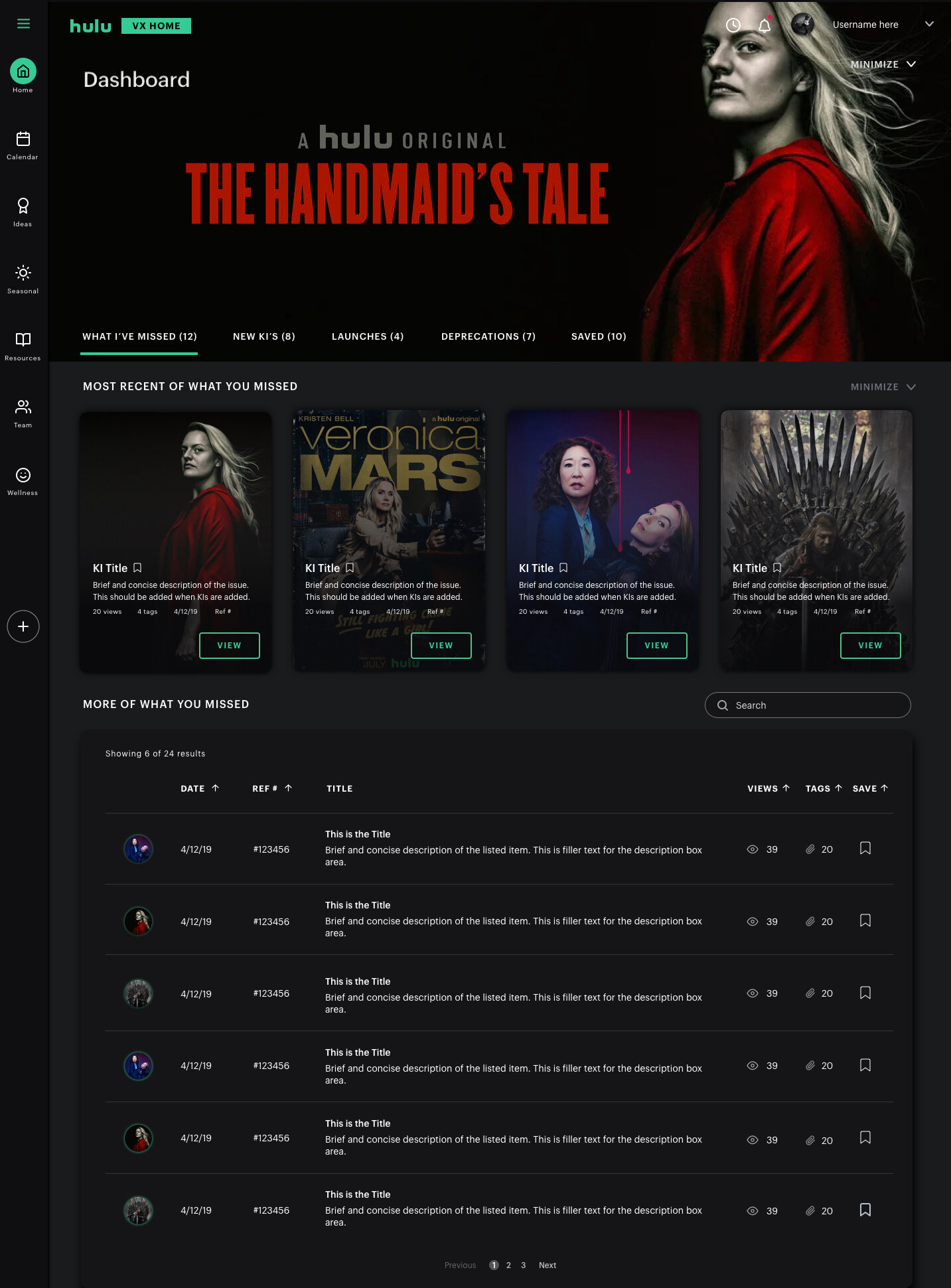
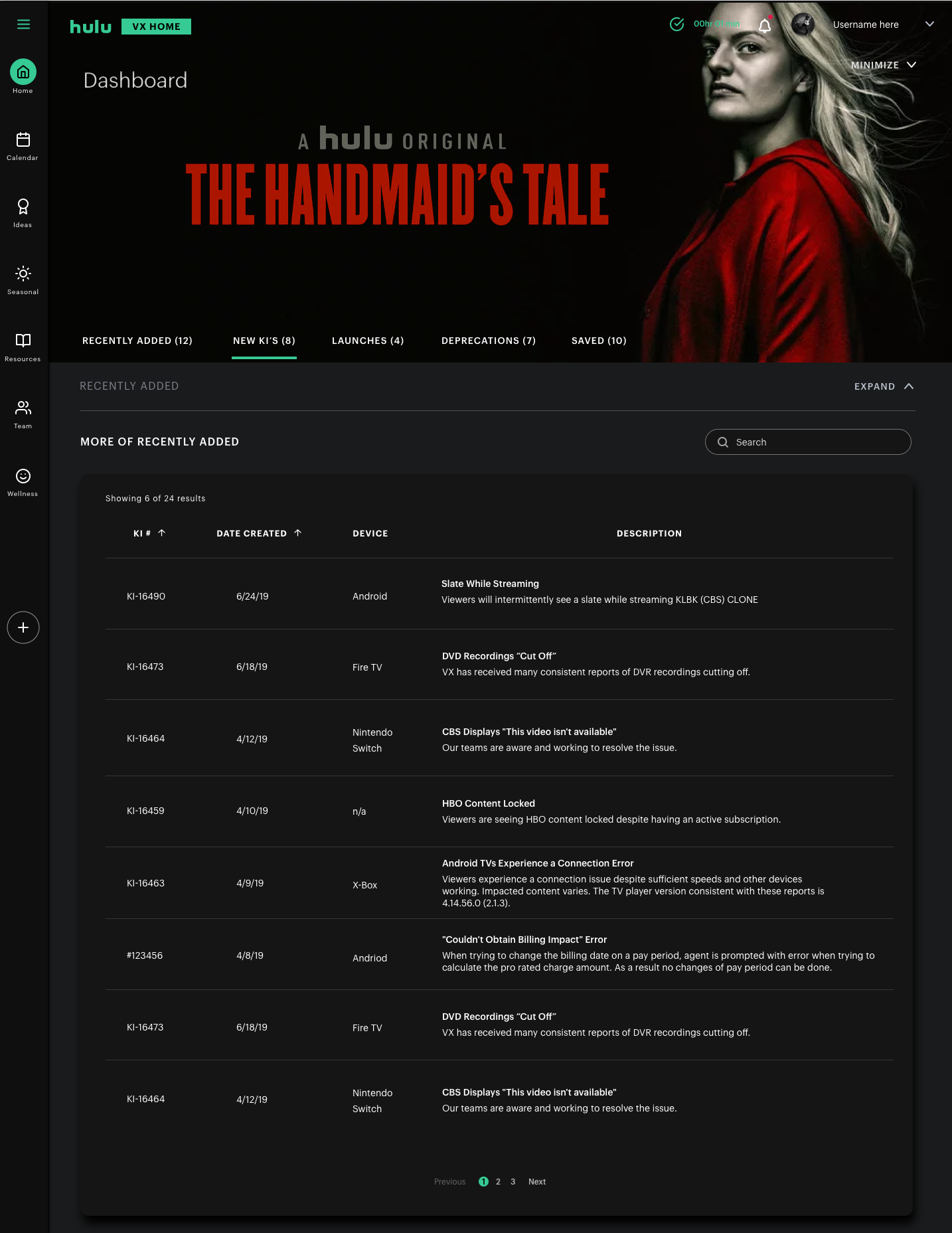
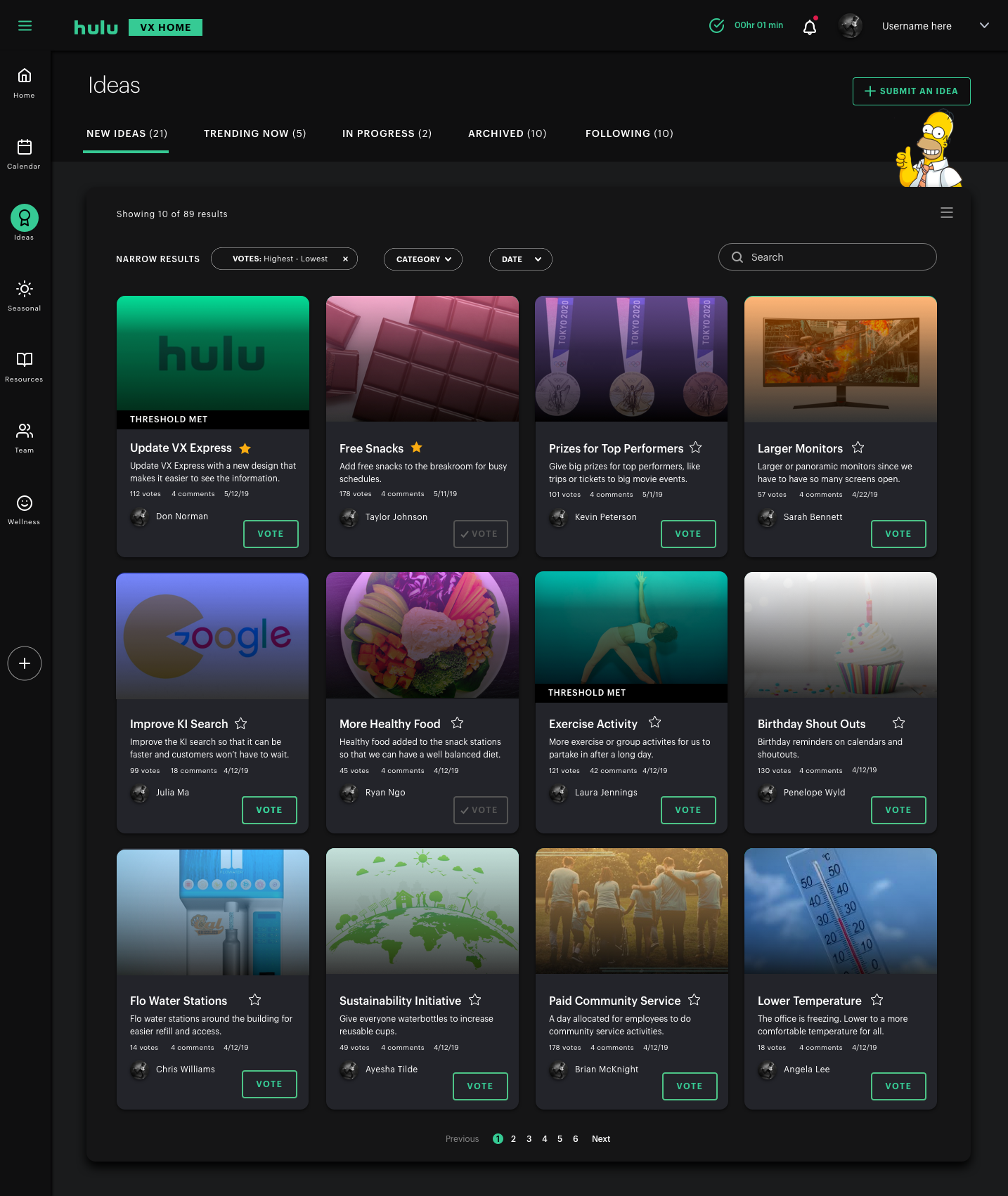
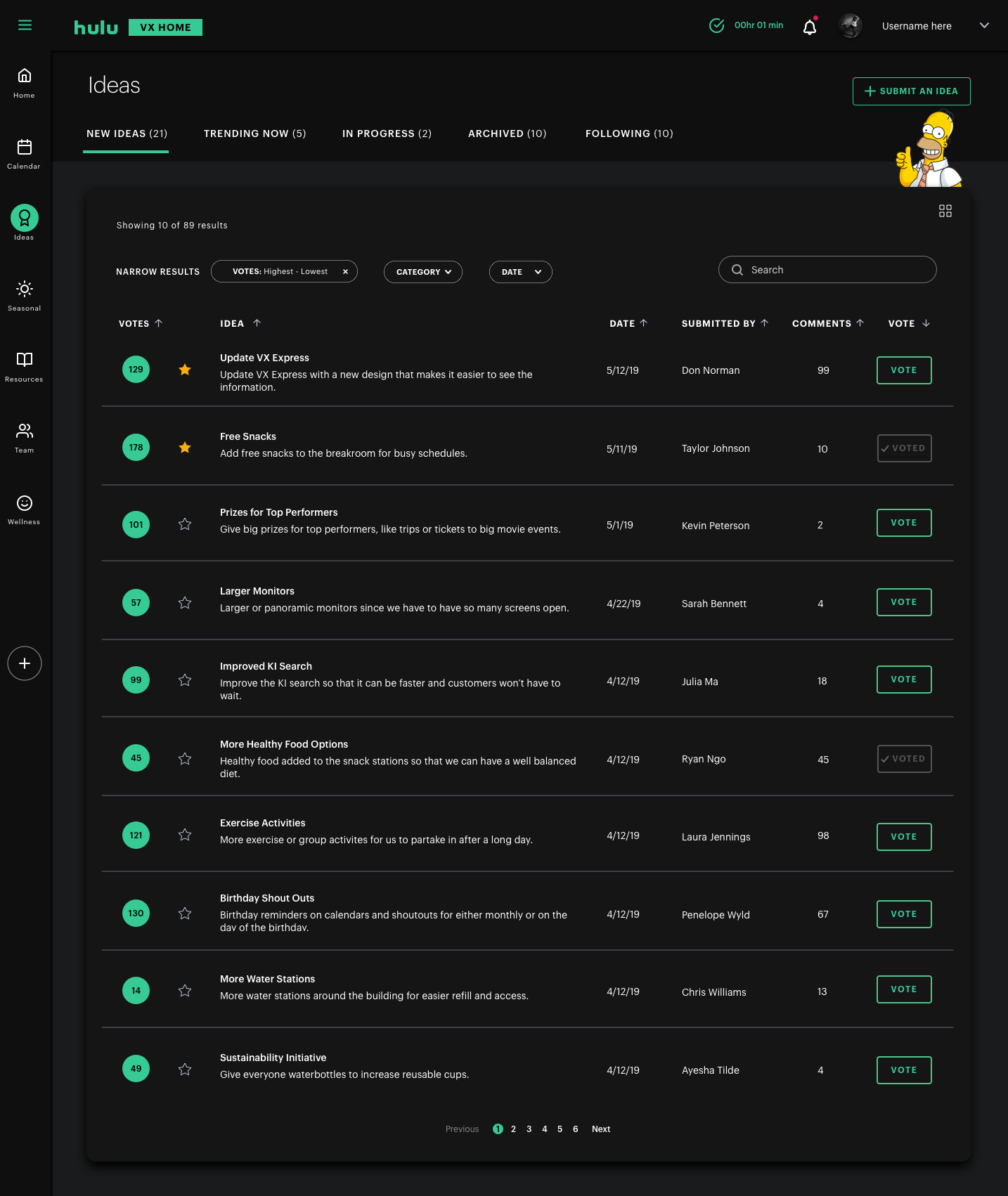
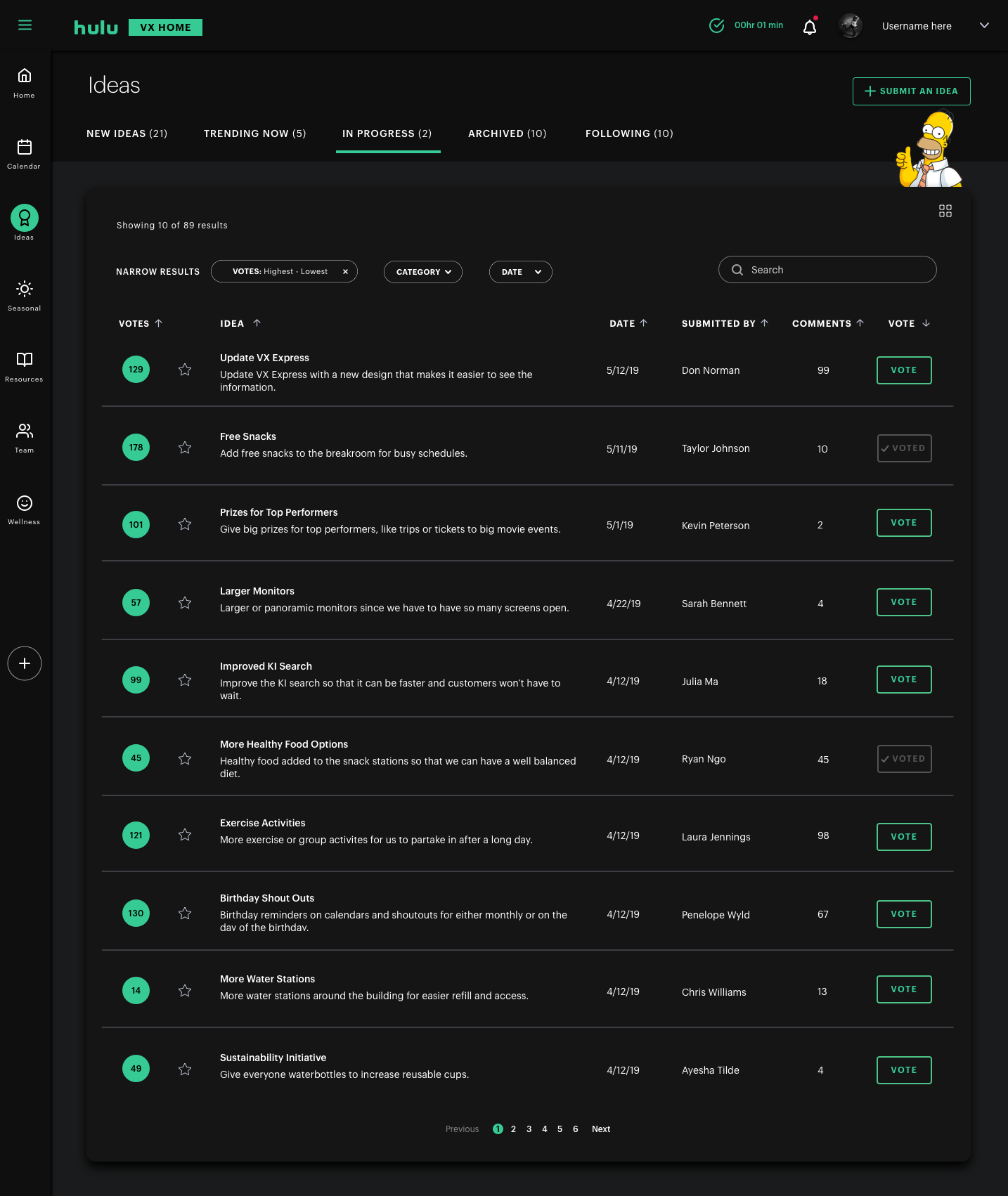
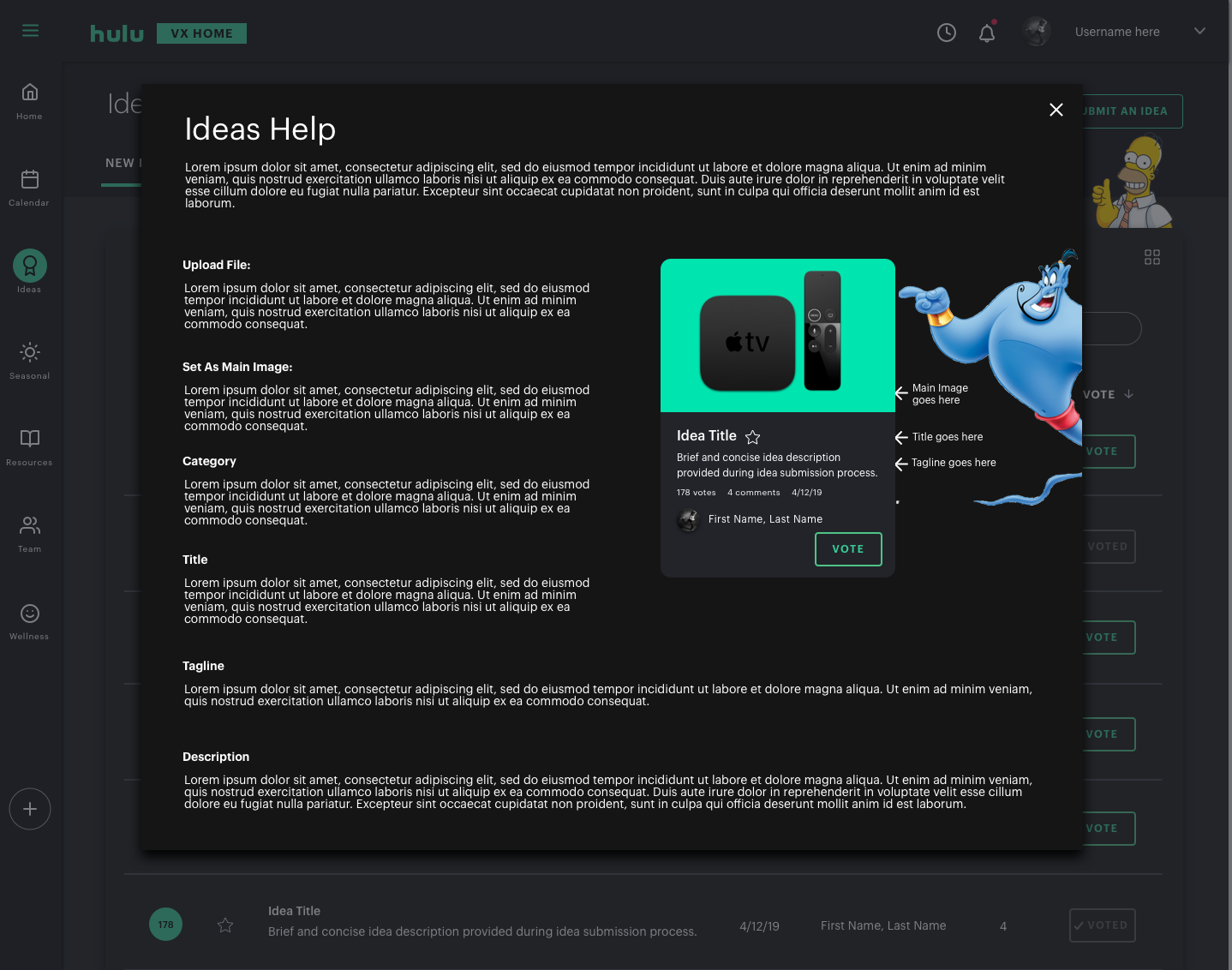
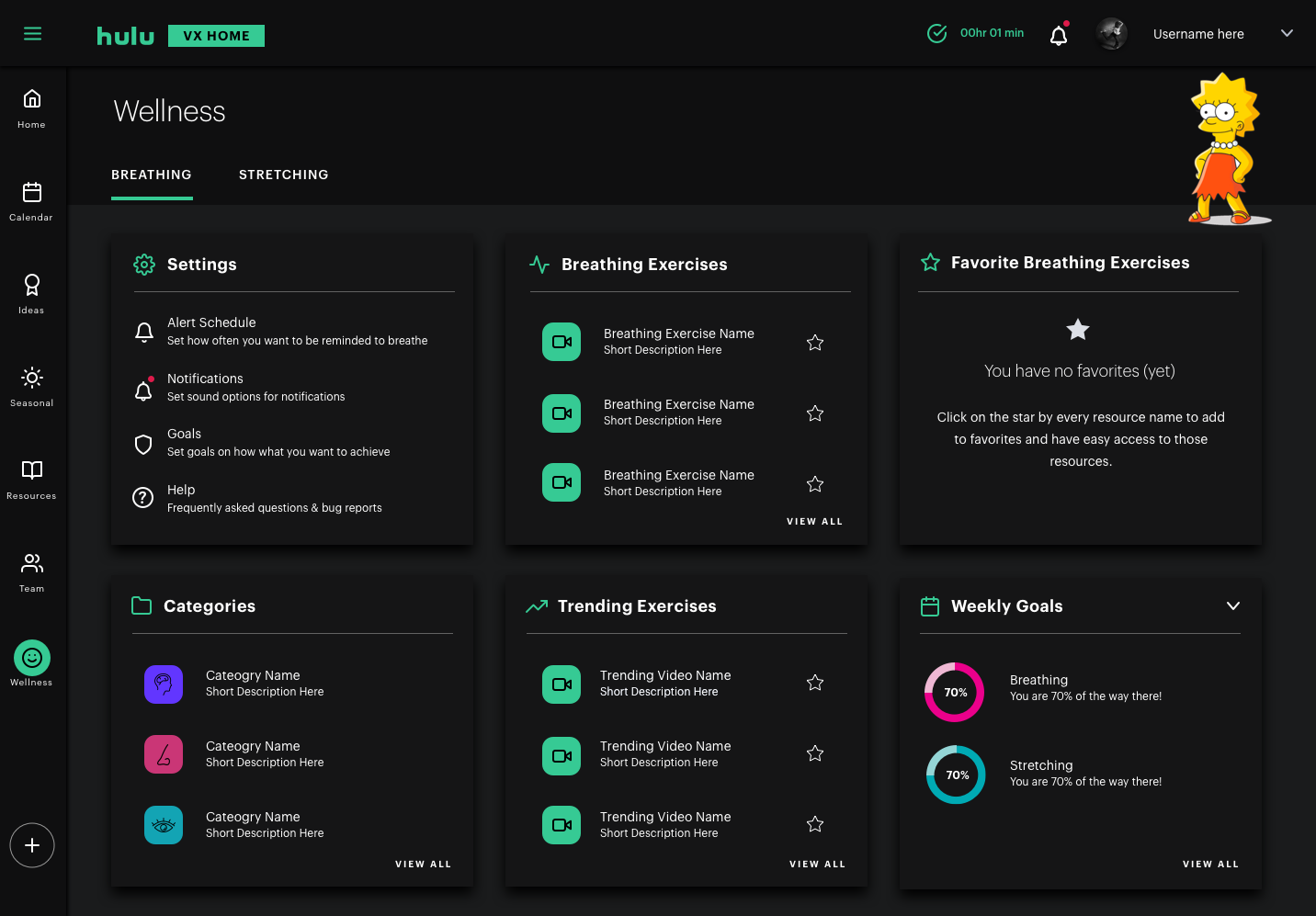
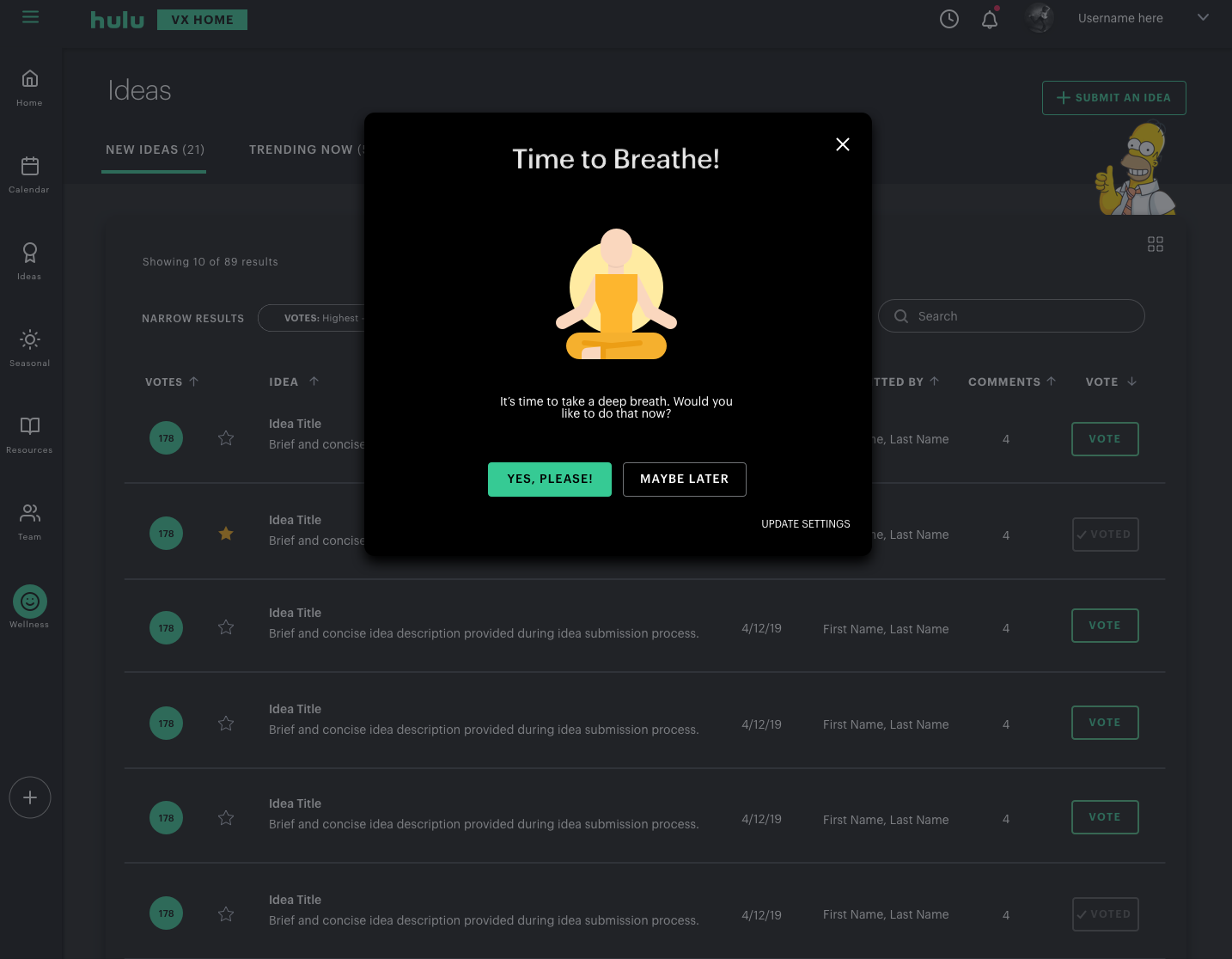
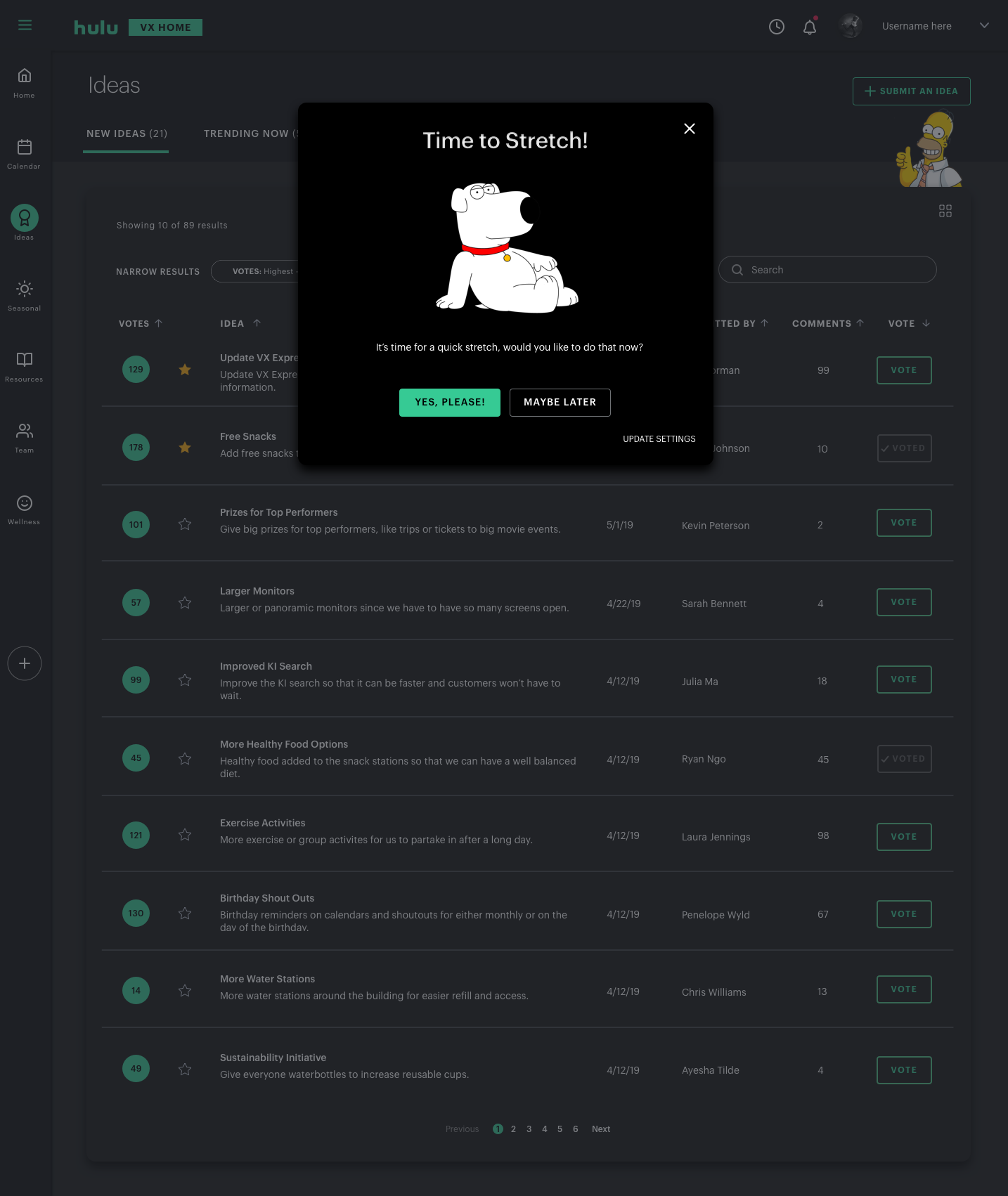
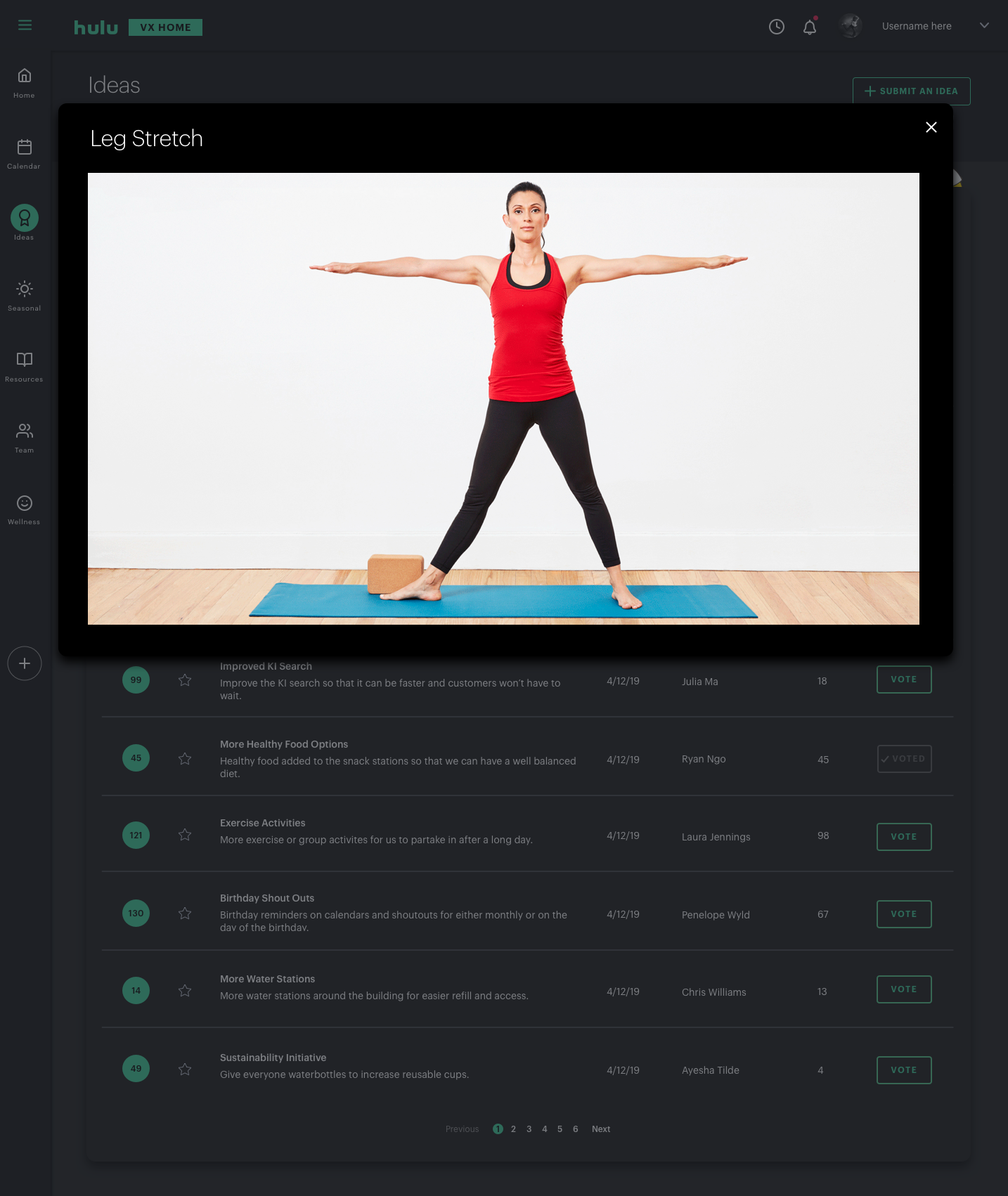
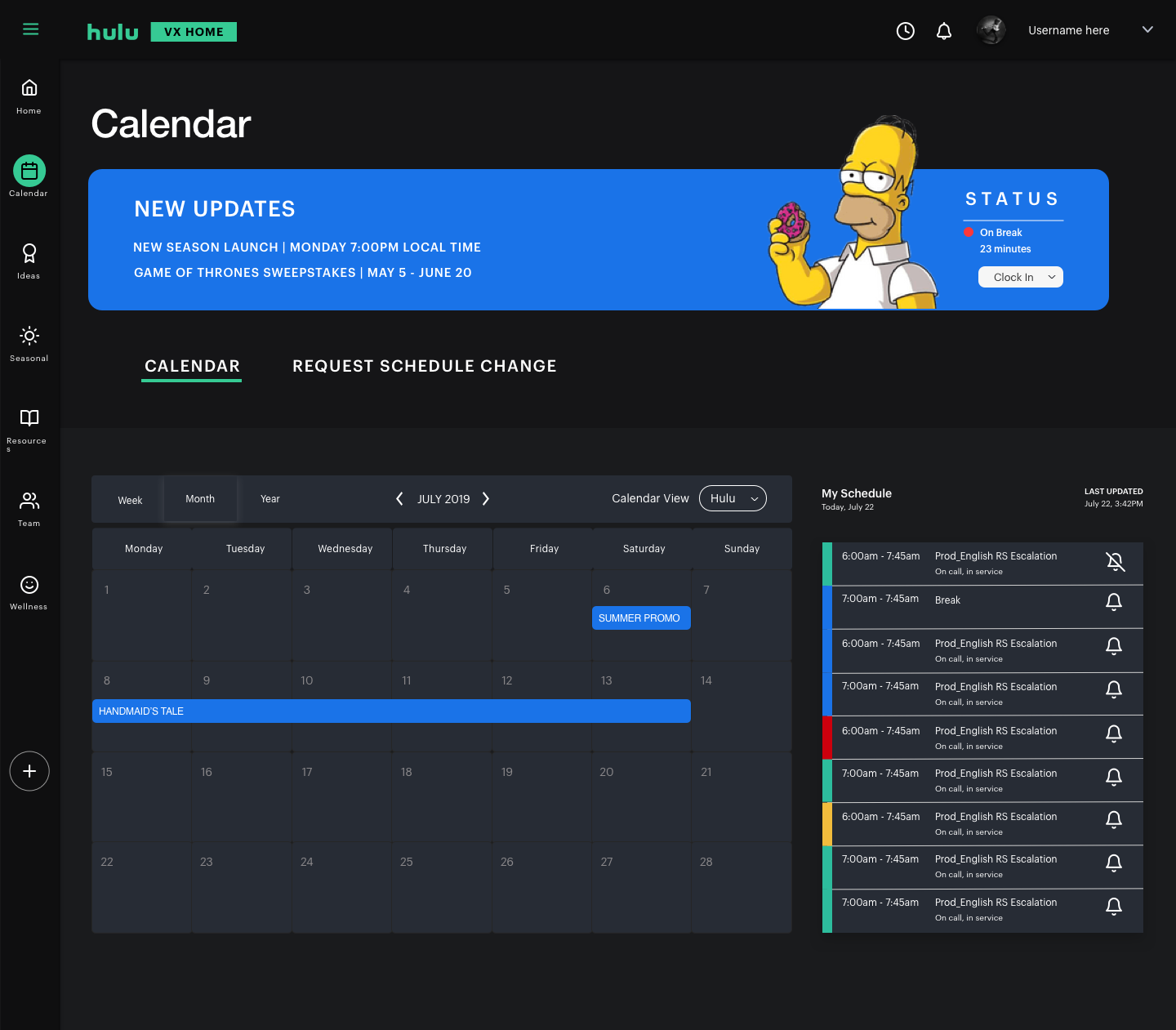

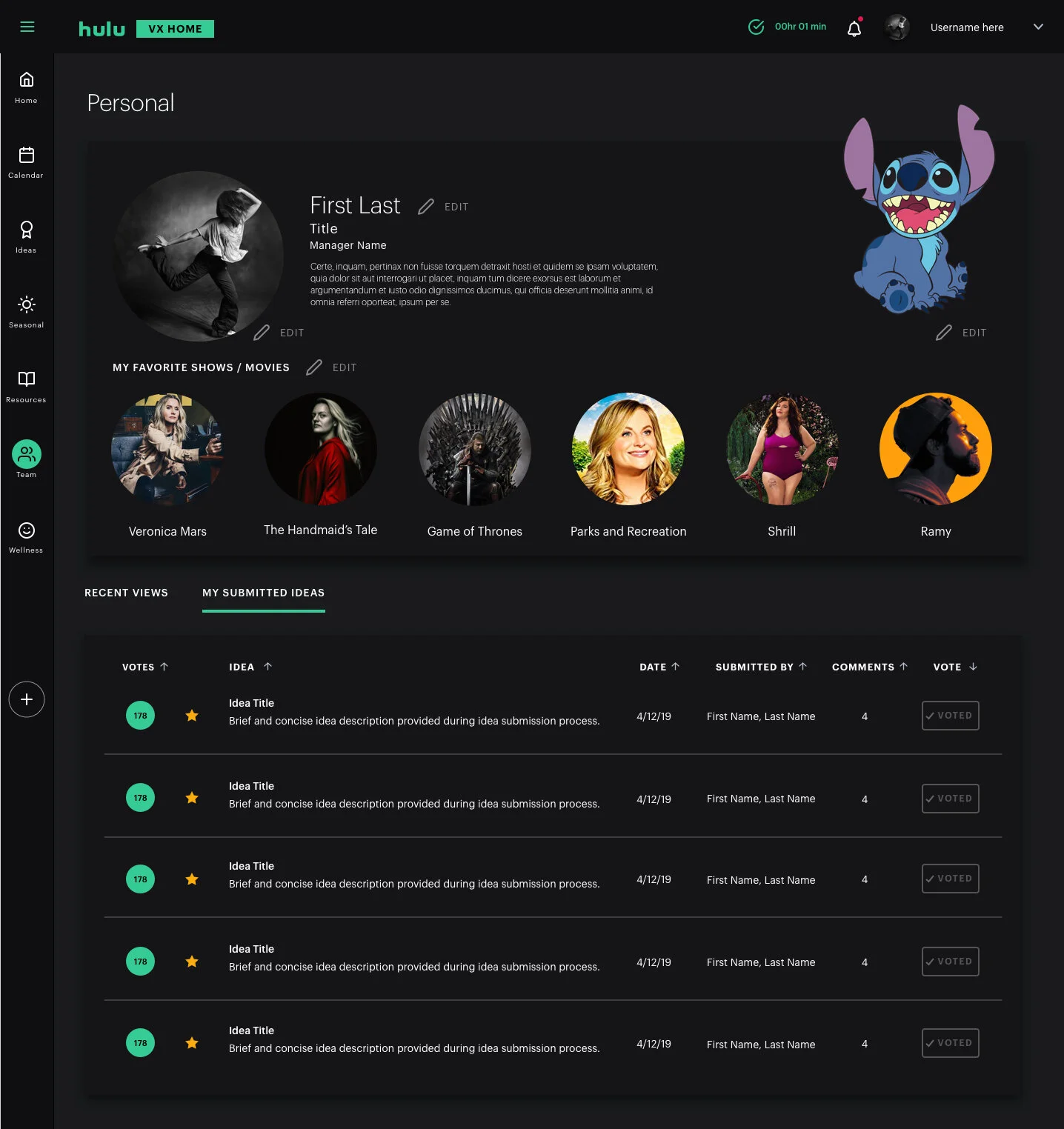
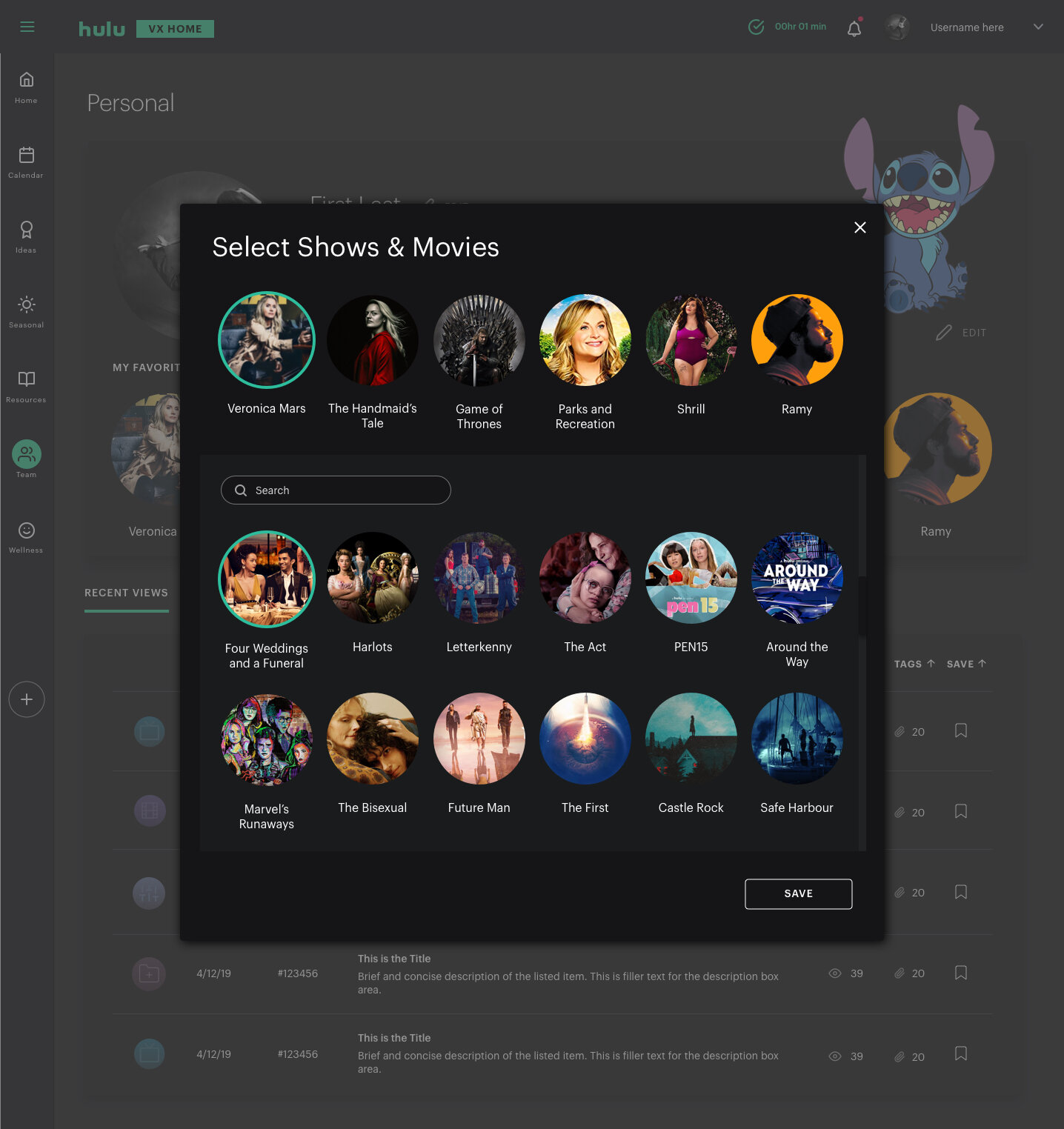
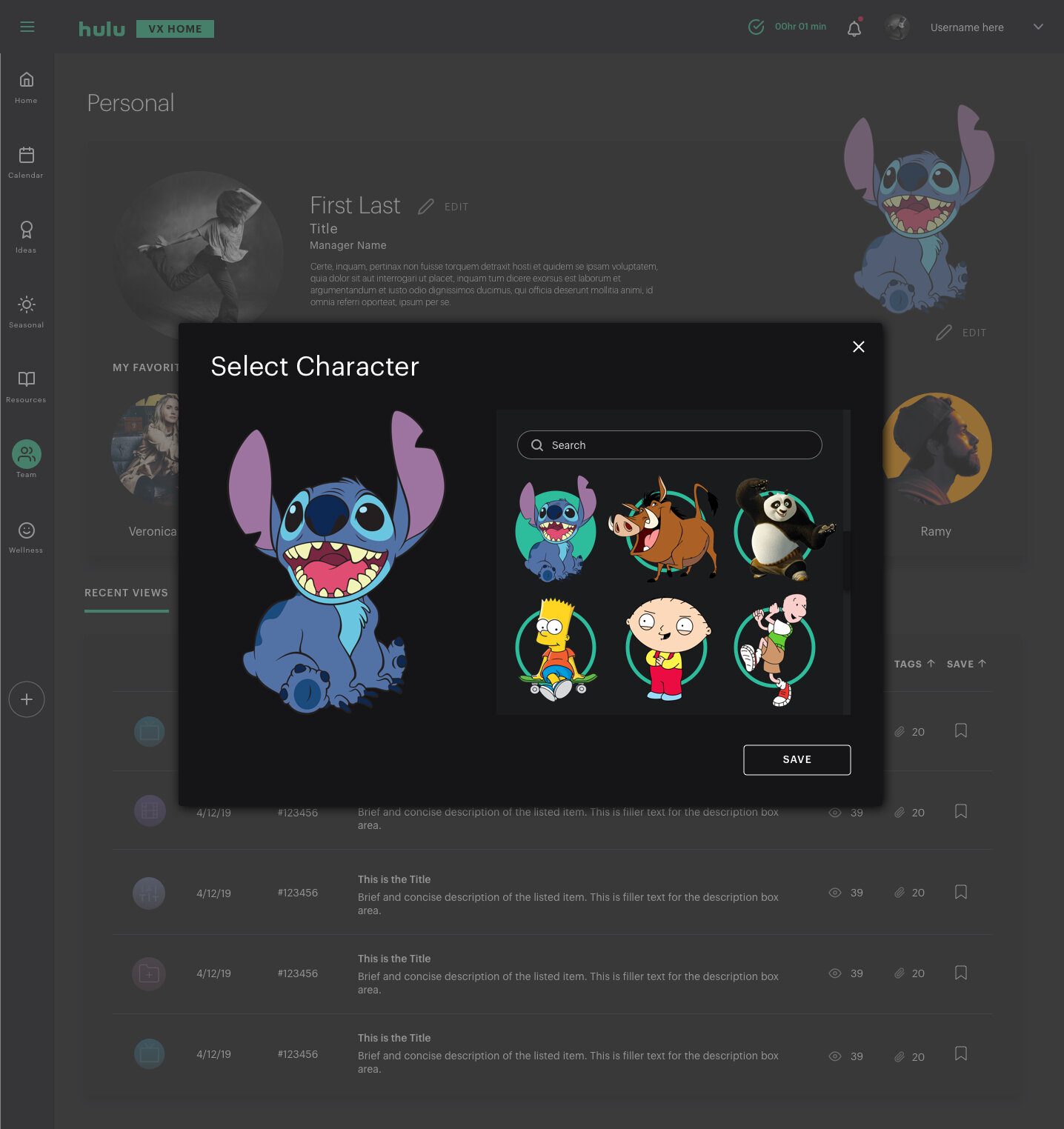
Thank you to my team and everyone at Hulu we worked with, without whom none of this would have been possible!
To watch the full presentation click here
Thank you!










